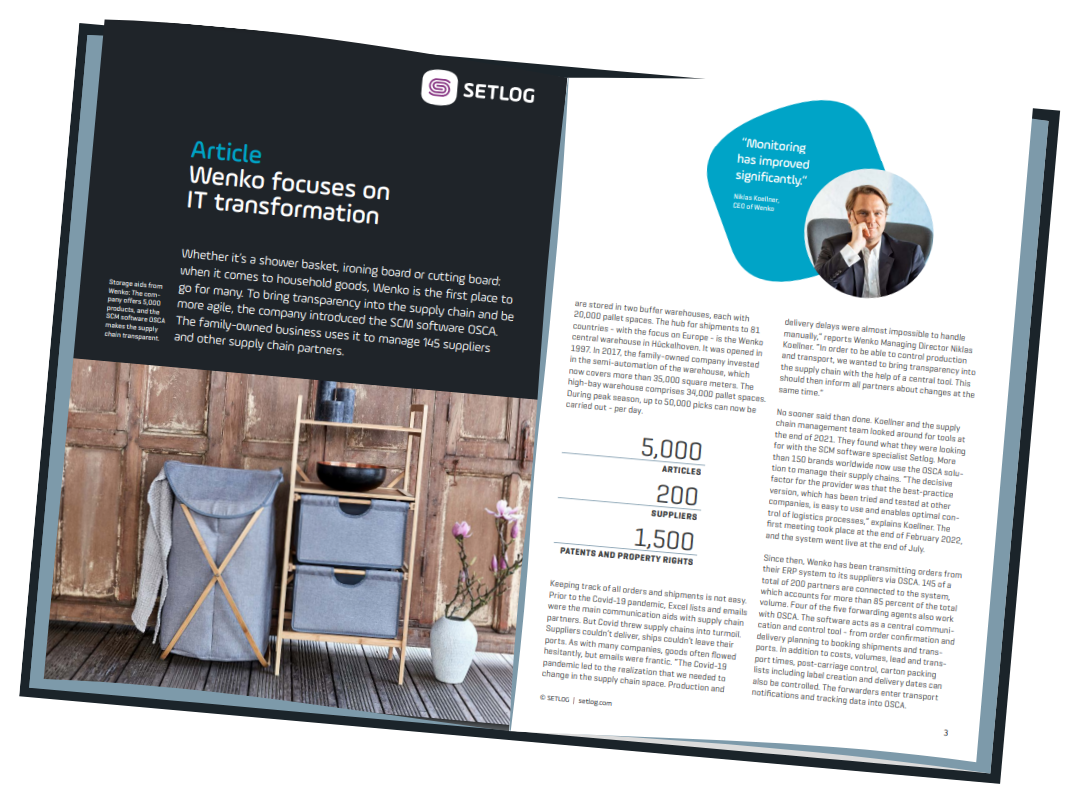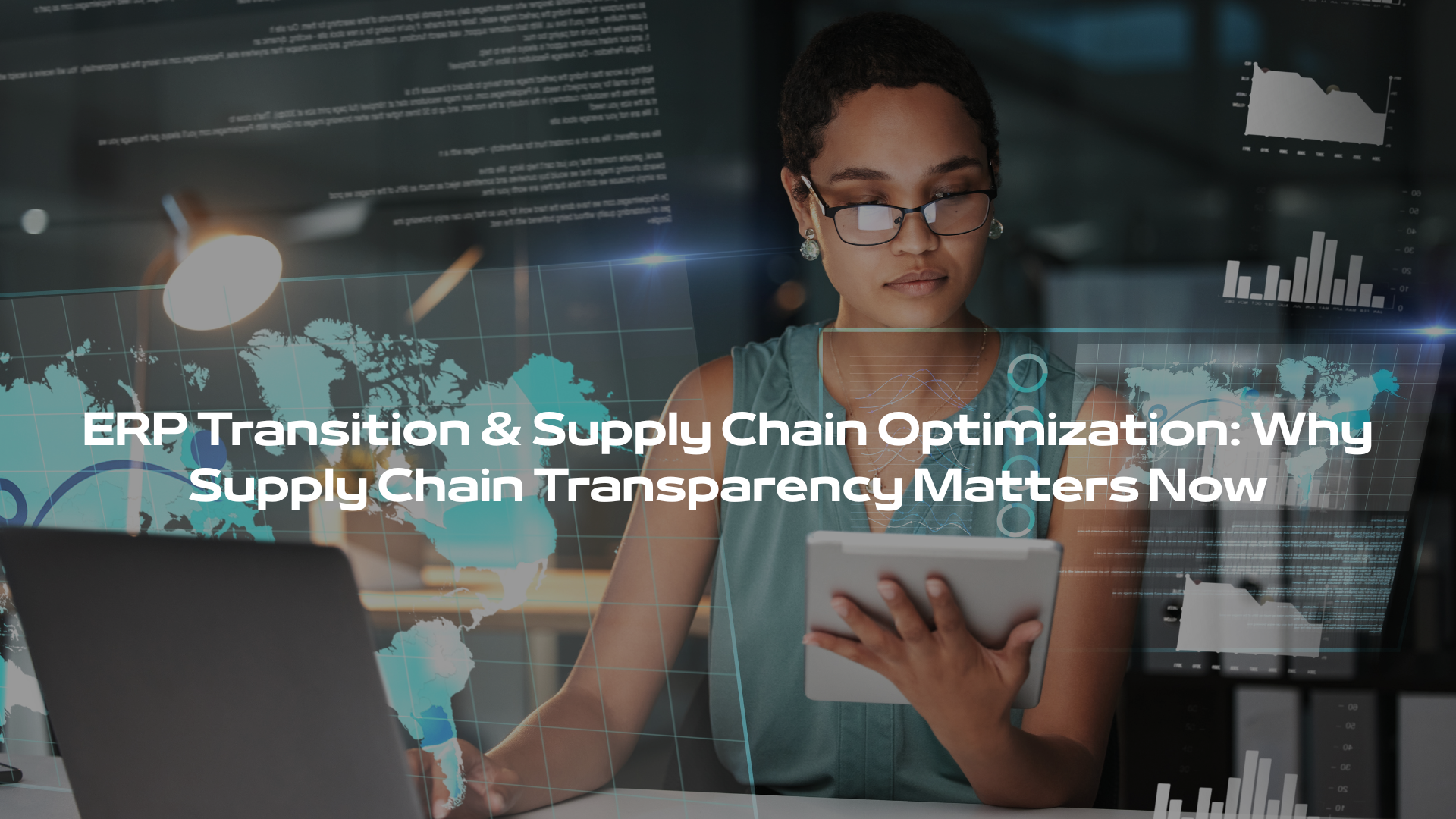Customer meetings are always insightful. They offer valuable glimpses into how industrial companies operate—and often highlight exactly where our OSCA software can make a difference by solving problems and increasing transparency across the supply chain. This perspective is usually shared by all departments involved—from Procurement and Logistics to IT.
But there’s another recurring theme: switching ERP systems brings opportunities—but also plenty of challenges. In the manufacturing industry in particular, where supply chains are globally intertwined and highly complex, a lack of transparency can quickly become a major risk. Unclear import terms, poor data integration, and missing interfaces don’t just cause operational bottlenecks—they threaten the entire goal of supply chain optimization.
This case study illustrates what really matters during an ERP transition—and why companies need to act now to stay competitive. The transition is already underway—but, as expected, it’s not without friction. And that friction has real consequences across the entire supply chain.
ERP Transition in Manufacturing: The Pain Points—and What Matters Now
Anyone in manufacturing knows: an ERP transition is no walk in the park. Especially when multiple locations, countries, and systems are involved, what starts as a simple upgrade quickly becomes a complex project with real-world implications—on daily operations and the supply chain.
Right now, one international industrial company is deep in such a transition. While sites in Germany and another European country are still running on Sage, their locations in Switzerland and Slovenia switched to SAP just two weeks ago. Full system alignment across all business units is targeted for completion by December 2025. Until then? Operations have to keep running. And that’s exactly where the cracks are starting to show.
Transparency? In Short Supply.
The biggest challenge at the moment: a lack of visibility across the supply chain. It may sound like a buzzword, but in practice, it’s a serious bottleneck. There’s no consistent tracking between the port and the warehouse. ETA data is unreliable—sometimes overly optimistic, sometimes way off the mark.
Document management is also reaching its limits. Information is scattered across silos with little to no standardization. If someone wants to know where a shipment is or whether customs documents are complete, they usually have to make a string of phone calls across multiple teams.
Inbound Logistics Running Blind
A 10-person inbound team is managing day-to-day operations under increasingly difficult conditions. The link between inbound and outbound processes is poorly defined, and communication is sluggish at best. One particularly critical area: warehouse capacity planning. Without reliable data, it’s impossible to predict available space, leading to either bottlenecks or underutilized areas.
DHL is on board as the main logistics provider, but even here, fully digital interfaces are missing—making clean data handoff to the ERP system difficult.
Big Brands, Big Leverage
One striking detail: around 90% of shipping volume is tied to major brand names. This creates risks—but also opportunities. Small process improvements here can have a huge impact. The remaining 10% is spread across 75 smaller brands—a patchwork with likely very different requirements.
What Needs to Happen Now
The project lead is now kicking off an internal process analysis. Together with two members of the procurement team, they’re evaluating whether current tools still match the company’s needs. What’s clear: system gaps need to be closed fast—before they become costly.
Fazit: No ERP Without a Plan B
An ERP system is the backbone of any modern industrial operation—but only if it works for everyone involved. Transition phases like this reveal, sometimes painfully, where processes don’t yet align. Supply chain transparency, coordinated teams, and clean data aren’t nice-to-haves. They’re foundational.
And maybe now is exactly the right time—not just to digitize existing processes—but to redesign them the right way from the start.
Our Mission: Identify Weak Spots. Deliver Solutions.
At Setlog, our goal is always to clearly identify process weaknesses—and ideally offer first solution ideas on the spot. Reference customers who can share real-world experiences from an industry perspective are especially helpful. We maintain close, personal relationships with our clients, many of whom are happy to openly share how they work with OSCA and the value it brings.
We’re excited to see how our partnership with this company evolves. One thing is clear: the ERP transition is in full swing—and the growing pains are already affecting the entire supply chain.
Wenko embraces digital transformation
Wenko is putting an end to manual supply chain management and switching to the SCM software OSCA. With over 200 suppliers, five freight forwarders, and around 4,000 shipments now coordinated digitally, the result is clear: greater transparency, faster response times to delays, and a significantly more agile supply chain.

